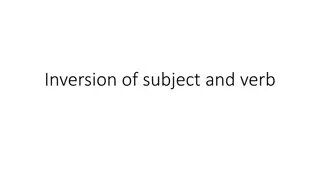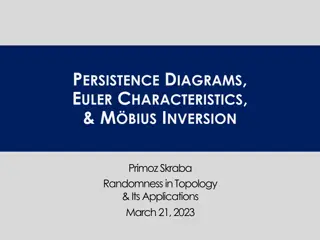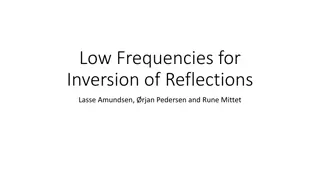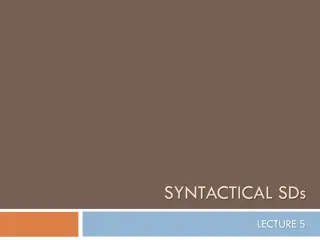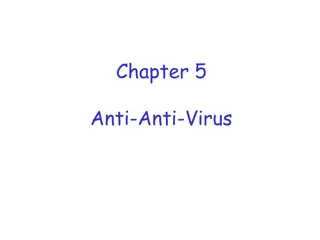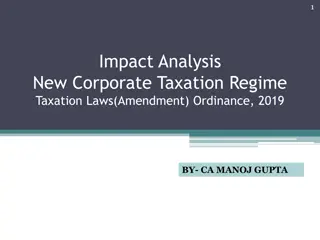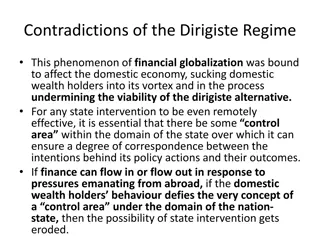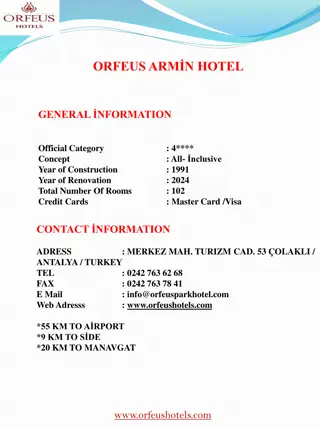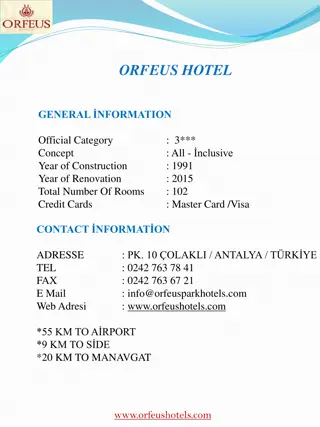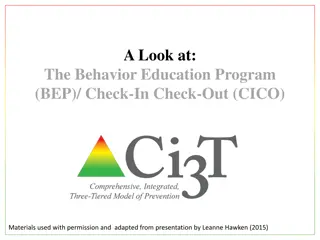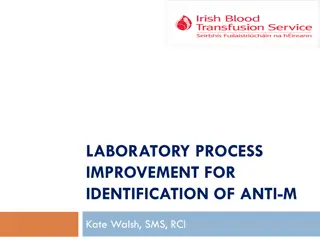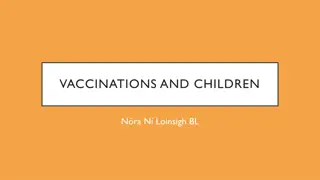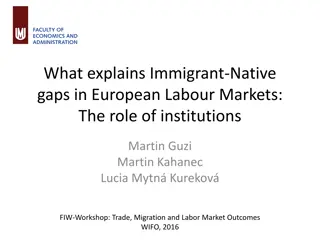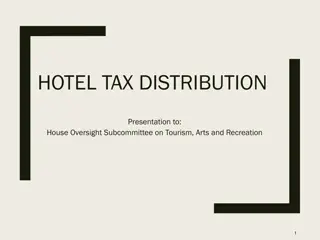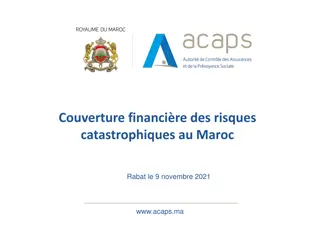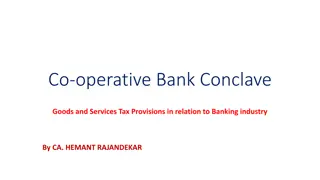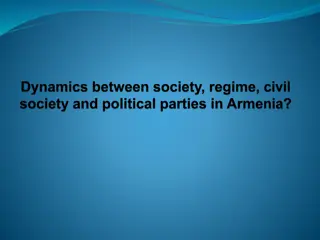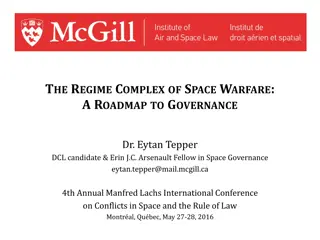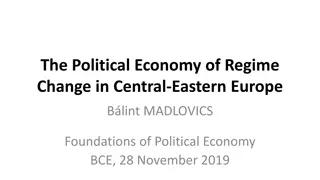Understanding the U.S. Anti-Inversion Regime & Potential Impact on Hotel California's Check-Out Policy
Explore the implications of the U.S. Anti-Inversion Regime on businesses like Hotel California and potential benefits of expatriating to reduce taxes and regulatory uncertainties. Learn about legislative history, limitations, and proposed reforms under Section 7874. Delve into the shifting landscape of international tax laws and considerations for multinational corporations.
- U.S. Tax Law
- Anti-Inversion Regime
- International Taxation
- Expatriation Benefits
- Business Tax Strategies
Download Presentation

Please find below an Image/Link to download the presentation.
The content on the website is provided AS IS for your information and personal use only. It may not be sold, licensed, or shared on other websites without obtaining consent from the author. Download presentation by click this link. If you encounter any issues during the download, it is possible that the publisher has removed the file from their server.
E N D
Presentation Transcript
THE U.S. ANTI-INVERSION REGIME: IS IT TIME FOR THE HOTEL CALIFORNIA TO ADOPT A NEW CHECK-OUT POLICY? University of Chicago Law School Federal Tax Conference November 4, 2022 Moderator: Presenter: Christopher Trump, Deloitte Tax LLP Scott M. Levine, Jones Day Panelists: John Merrick, Associate Chief Counsel (International), Internal Revenue Service Caroline Ngo, McDermott Will & Emery LLP 0
Agenda Benefits to Expatriating The Current U.S. Anti-Inversion Regime Legislative Proposals to Broaden the Anti-Inversion Regime Residency Tests and Exit Taxes: A Global Perspective Is the Time Ripe to Consider Reforming Section 7874? Changes Since its Enactment Discussion Example Possible Reforms to Section 7874 1
Potential Benefits of Expatriating Tax-Related Benefits Reduce U.S. CFC-related taxes (i.e., GILTI and subpart F income). Reduce U.S. taxable income through intercompany debt and royalty arrangements. Reduce U.S. taxable income tax by transferring assets (e.g., intellectual property) out- from-under U.S. parent to underneath new foreign parent. Grow business outside the United States without subjecting future income to U.S. income tax. Reduce risk of subjecting business to U.S. legislative and regulatory uncertainty. Non-Tax-Related Benefits Greater ability to attract non-U.S. equity and debt capital. Improve regulatory environment. Closer proximity to suppliers or customer base. 2 2
Legislative History: Two Schools of Thought Level the Playing Field Believed United States at a Competitive Disadvantage Supported Dividend-Exemption System Concern Over Increase in Foreign Takeovers of U.S. MNEs Proposed a Reduction in Corporate Tax Rate + Move to (Partial) Territorial System Toll Charge/Deny Tax Exit Visa Believed Competitiveness Argument Inaccurate Believed Dividend-Exemption System Would Not Increase U.S. Exports U.S. FTC System Sufficiently Generous Still Incentive to Reduce U.S. Source Income via Intercompany Transactions 3 3
Pre-Section 7874 Limitations on Expatriation In 1994, Treas. Reg. 1.367(a)-3(c) was issued to make an expatriation transaction taxable at the shareholder or corporate level unless certain exceptions are otherwise applicable. For a shareholder-level expatriation to qualify for nonrecognition treatment under -3(c), among other requirements, the foreign acquiring corporation must be larger than the U.S. target. Other Limitations Section 367(e): Restricts expatriations by turning off sections 355(c) or 361(c) in an outbound section 355-qualifying distribution and section 337 in an outbound section 332 liquidation. See also Treas. Reg. 1.367(b)-5. Section 269B: Treats a foreign corporation stapled to a domestic corporation as a domestic corporation. Section 1248(i): Recharacterizes internal inversion of USP rendering CFC new parent as a dividend from CFC to USP to the extent of CFC s E&P. 4 4
You can check out any time you like, but you can never leave. Section 7874(b) 5
Section 7874 80% Inversion* In October 2004, section 7874 was enacted to limit expatriation transactions. In general, if the following three requirements are met, then a non-U.S. incorporated entity will be treated as a domestic corporation for all U.S. federal income tax purposes: - Foreign corporation acquires substantially all of the properties of a domestic corporation; - Former shareholders of domestic corporation hold at least 80 percent (by vote or value) of stock of such foreign corporation after the transaction by reason of having held equity interests in the domestic entity; and - Foreign corporation and its expanded affiliated group ( EAG ) do not have substantial business activities ( SBA ) in its country of incorporation. Similar rules apply for acquisitions of properties of domestic partnerships. S/Hs DT Stock FA Stock DT FA DT FA Stock Held by DT S/Hs 80%? Total FA Stock For a summary of the shareholder continuity tests, see Appendix A starting on Slide 28. * 6
Section 7874 60% Inversion* Same as 80% inversion substituting 60 percent for 80 percent in the ownership percentage, the foreign acquiring corporation will remain a foreign corporation for U.S. tax purposes. S/Hs DT Stock If a 60% inversion, for the post-inversion 10-year period, DT is not permitted to use certain tax attributes (e.g., net operating losses) to reduce the U.S. federal income tax liability attributable to inversion gains. FA Stock DT FA Inversion gain is (i) income or gain recognized on the transfer of stock or other properties by an expatriated entity and (ii) income received or accrued by reason of a license of any property by an expatriated entity. DT FA Stock Held by DT S/Hs 60%? Inversion gain does not include income from the transfer or license of inventory to a foreign related person unless the transfer or license was part of the inversion transaction. Total FA Stock For a summary of the shareholder continuity tests, see Appendix A starting on Slide 28. * 7
Thwarting a New Wave of Expatriations: 2014-2016 During Obama Administration s second term: Promise of fundamental corporate international tax reform proved politically unattainable. Increasing number of large publicly-traded U.S.-based MNEs announcing plans to invert. As a result, Treasury set out to promulgate a raft of new rules* designed to stop thoughts of vacating the U.S. tax net in their tracks including rules: Making it more difficult to expatriate (e.g., rules tending to increase the ownership fraction); and Reducing the benefits of expatriating within the 60% to under 80% corridor (e.g., rules rendering de-CFCing and out-from-under planning most costly). * For a summary of these new rules, see Appendix B starting on Slide 30. 8
Tax Residency Tests Under the U.S. federal income tax system, a corporation is treated as a domestic corporation if it is created or organized under the laws of the United States, one of the states, or the District of Columbia. Section 7701(a)(4). A corporation is treated as a foreign corporation if it is not a domestic corporation. Section 7701(a)(5); Treas. Reg. 301.7701-5(a). In some countries, a corporation is a resident of the country in which it was incorporated or its central management and control (or some variation thereof) is exercised there. See, e.g., Canada, United Kingdom, China, France, Germany, India, Ireland, Luxembourg, and Spain. In other countries, a corporation is a resident of the country only if the place of the corporation s main administration or effective management is in the country. See, e.g., Mexico. Under yet another test, in some countries, a corporation is deemed to be resident if it is incorporated under local law or opts for registering its corporate headquarters in that country. See, e.g., Brazil. 9
U.S. Corporate Exit Tax Regime In general, when a U.S. person transfers tangible property to a foreign corporation, the built-in gain, if any, is subject to U.S. tax. See sections 367(a), 482, 1001(a). In general, when a U.S. person transfers intangible property to a foreign corporation, If in an otherwise qualifying nonrecognition transaction, taxable over time as a stream of royalty payments paid over the useful life of the asset, adjusted based on the income earned on the assets. See sections 367(d), 482. If in a taxable sale, the built-in gain, if any, is subject to U.S. tax. See sections 482, 1001(a). Intangibles include goodwill, going concern value, and workforce in place. 10
U.S. Individual Exit Tax Regime Section 877 Certain former U.S. citizens (each, an Expatriate ) continue to be subject to U.S. income tax on their U.S.-source gross income and other ECI (net of certain deductions) for a ten-year period following the year in which they renounce their U.S. citizenship. Gain or income from foreign corporation stock treated as U.S.-source income if an Expatriate owned, at any time during the two-year period ending on the date of their expatriation, more than 50 percent of the total combined voting power or total value of the corporation s stock. Section 877A Expatriates are treated as if all of their property is sold on the day before the expatriation date at its then fair market value. In determining the amount of gain recognized, an Expatriate is not permitted to take into account any provision of [the Code]. Deferral permitted under certain circumstances until assets are sold. 11
Overview of ATAD1s Exit Tax Directive (Art. 5, Decl. 10) An exit tax is typically levied on the capital gains of a resident taxpayer, whether or not actually realized, when the taxpayer ceases to be a tax resident or shifts assets outside of that country s taxing jurisdiction (absent any treaties or other exceptions). The exit tax calculation is determined by assessing the transferred assets at FMV at the time of the resident s exit, less tax basis, if a taxpayer transfers the assets of: its head office, a permanent establishment, a business function from the member state to another country where the member state no longer has rights to tax the assets due to the transfer, or a taxpayer transfers their tax residence to another country, except for those assets connected to a permanent establishment in the initial country. 12
Survey of OECD Country Residency Tests Part. Exempt. G/C Part. Exempt. Rate Country Exit Tax Exit Tax Rate 30% or 25% (connected entities with < AUS 50 mil in turnover) Australia Yes Yes 100% 15% (standard rate applied to 50% of gains) + 25% (departure tax) Canada Yes Yes 50% France Yes 33 34% Yes 88% Germany Yes 22.825 32.825% Yes 95% Ireland Yes 12.5% (standard) or 33% (anti-abuse) Yes 100% Italy Yes 27.9% Yes 95% Luxembourg Yes 24.94 28.69% Yes 100% Mexico Yes 30% Yes (Div.) N/A 15% up to EUR 395,000 25.8% exceeding EUR 395,000 Netherlands Yes Yes 100% Spain Yes 25% Yes 95% Switzerland Yes 7.8% (effective, flat rate of 8.5%) Yes 100% United Kingdom Yes 20% Yes 100% Brazil, China, India N/A N/A N/A N/A 13
Overview of Pillar Two (a/k/a: the GloBE Rules) Pillar 2 Scope: Consolidated revenue exceeds EUR 750 million 2 of 4 years preceding tested year Income Inclusion Rule (IIR) Primary rule: top-up tax imposed on ultimate (or intermediate) parent entity for low-taxed constituent entities (min. ETR: 15%) UPE (Country A) Qualified Domestic Minimum Top-up Tax (QDMTT) FS1 (Country B) FS2 (Country C) Applies before IIR/UTPR; Assessed by the low-tax jurisdiction itself consistent w/ IIR computation; Minimum ETR: 15% What about CFC regime taxes? Low-Tax Undertaxed Payments Rule (UTPR) If No IIR imposed: Top-up tax allocated to jurisdictions with constituent entities based on tangible assets/employees; Imposed by limiting deductions or an equivalent adjustment (Min. ETR: 15%) 14
Legislative Proposals* Several legislative changes to section 7874 have been proposed that, to date, have not been enacted. Some proposals have included one or more of the following: Reducing the shareholder continuity test for an 80% inversion to > 50%. Make shareholder continuity irrelevant if EAG managed and controlled in United States post-transaction. Make shareholder continuity irrelevant if EAG has 25% of employees, compensation, assets, or income in the United States. Limit certain treaty benefits in the event of an inversion under certain circumstances. For section 163(j) purposes, reduce the percentage of adjusted taxable income limit percentage under section 163(j). * For a summary of the legislative proposals, see Appendix C starting on Slide 36. 15
Is the Time Right to Reconsider the U.S. Anti-Inversion Regime? Post Section 7874 Enactment Changes to the Global Tax Landscape Passage of TCJA Reduced corporate tax rate from 35% to 21% Enactment of transition tax and section 245A DRD effectively ending deferral on foreign E&P Enactment of stronger section 163(j) and BEAT and tightening of section 482 Repeal of section 367(a)(3) active trade or business exception Enactment of sections 245A(e) hybrid dividend and section 267A hybrid transaction/entity rules FDII and GILTI regimes; enactment of section 91 Anti-inversion provisions: turn-off of section 1(h)(11), increased transition tax rate, and expansion of BEAT payment definition to include COGS, increase excise tax rate from 15 to 20 percent on insider stock-based compensation Enactment of CAMT Implementation of ATAD 1 and 2 (interest limitation rules, exit taxation rules, general anti- abuse rules, CFC rules, and anti-hybrid mismatch rules) Precipice of Pillar Two (GloBE Rules) Implementation 16
Are Current Expatriation Benefits Sufficient to Warrant Permanent U.S. Corporate Tax Residency? Subpart F Income Avoidance Sales of CFCs and the Lack of a Meaningful Participation Exemption Limiting the Impact of the U.S. Foreign Tax Credit and Related Expense Allocation System Transfer Pricing Benefits on the Margins Risk of Taxpayer-Unfavorable Changes to U.S. Law 17
Example: Base Case S/Hs Assumptions 1. USP has a GILTI ETR of 10.5%. Y1 = $1,100x of gross income, $1,000x of deductible expenses attributable to domestic activities (including $50x royalty expense) $50x annual royalty 2. There are no section 861 expenses to allocate to either HT-CFC or LT-CFC. USP CIT: 21% 3. The relevant group is over the BEAT and Pillar Two thresholds. 4. The income tax base of each of FP, USP, HT-CFC, and LT-CFC is the same as each of their respective GloBE and QDMTT bases. QDMTT HT-CFC CIT: 30% LT-CFC CIT: 0% 5. The HTJ, and LTJ have each enacted Pillar Two-compliant legislation consistent with the OECD s model rules (but the United States has not). Y1 = $100x of tested income Y1 = $50x of tested income + $50x of Subpart F income 6. Taxes paid on a QDMTT are not creditable or deductible for U.S. tax purposes. 18
U.S. MNE Example (No Expatriation) Determining USP s Regular U.S. Federal Income Tax Liability Gross income of $1,100x and deductions of $1,000x (including the USP related related party royalty expense but excluding any deductions under section 250(a)(1)(B)). $150x of GILTI inclusion (including a section 78 gross-up for $30x of foreign taxes paid) resulting in $75x of net GILTI-related income (after taking into account a deduction under section 250(a)(1)(B)), and $24x of available foreign tax credits (before the section 904 limitation). $50x of subpart F inclusion with no associated foreign taxes (prior to application of LTJ s QDMTT). Regular U.S. federal income tax liability = ($100 US net income x 21%) + ($75 GILTI + $50 subF x 21%) FTC of $15.75 ($24 of GILTI taxes deemed paid capped at 21% x $75) = $31.50x. Under facts of example, no BEAT liability. HTJ regular corporate income results in tax liability on $100x of income = $30x. LTJ QDMTT results in LTJ tax liability of $4.50x. USP Group s global ETR is 22.0% (i.e., $31.50x (U.S.) + $30x (HTJ) + $4.50x (LTJ) = $66x). 19
Example: USP Previously Expatriated S/Hs FP CIT:0% $50x annual royalty QDMTT * USP HT-CFC CIT: 30% LT-CFC CIT: 0% Y1 = $100x of tested income Y1 = $50x of tested income + $50x of Subpart F income Y1 = $1,100x of gross income, $1,000x of deductible expenses attributable to domestic activities (including $50x royalty expense) * Same facts as the Base Case except USP previously expatriated in a transaction that was neither a 60% nor an 80% inversion. 20
Post-Expatriation Foreign MNE Example Determining USP s Regular U.S. Federal Income Tax Liability Gross income of $1,100x and deductions of $1,000x (including the USP related party royalty expense). Regular U.S. federal income tax liability = $100x of U.S. net income x 21% = $21x. Under facts of example, no BEAT liability. HTJ regular corporate income results in tax liability on $100x of income = $30x. LTJ QDMTT results in LTJ tax liability of $100x = $15x. FP Group s global ETR = 22.0% (i.e., $21x (U.S.) + $30x (HTJ) + $15x (LTJ) = $66x). Although total taxes paid globally are the same in both examples, the United States cedes $10.50x to LTJ in the post-expatriation example. 21
Overview of Possible Modifications to the U.S. Anti- Inversion Regime 1. Status Quo 2. Management and Control Rule Reform statute from a shareholder percentage test to a management and control test. 3. Pillar Two Scope Rule Limit application of section 7874 to those U.S. MNEs not subject to Pillar Two. 4. Expanded Inversion Gain Rule Repeal the 80-percent test and strengthen the inversion gain rules. 5. Exit Tax Rule Repeal section 7874 and enact a comprehensive section 877/877A-style exit tax. Discussion assumes Pillar Two has been implemented in a critical mass of jurisdictions (including the United States) and MNE groups are in scope unless stated otherwise. * 22
Modification #1: Status Quo Rule: Section 7874 as currently enacted and the regulations thereunder. Pros Continues to disincentivize U.S. MNEs from expatriating to obtain U.S. federal income tax benefits and the collateral harm to the U.S. corporate tax base. Only potentially applies to a relatively small group of U.S. MNEs each year. Cons Extremely complex set of rules and regulations resulting in compliance challenges and possibly inadvertent inversions. Potential stifling of non-tax motivated cross-border M&A. Can result in economically similar transactions treated differently for seemingly arbitrary reasons. May dissuade new businesses from organizing in the United States. 23
Modification #2: Management and Control Rule Rule: When a foreign corporation acquires a domestic corporation, regardless of the mix of consideration received by the domestic corporation shareholders, corporate tax residency for U.S. tax purposes determined under European-style management and control test subject to a substantiality test. Corporate residency outside of foreign acquisition context continues to be determined under current place of incorporation rule. Pros Eliminates arbitrary shareholder continuity test. Focuses on U.S. target corporation s management and their future location, creating stronger expatriation disincentives than current regime. Cons Doggett and similar proposals likely to lead to multi-residency issues and related complexity. Potentially discourages retention and expansion of U.S. workforce. May need a corresponding strengthening of U.S. exit tax if residency found to be outside the United States. 24
Modification #3: Pillar Two Scope Rule Rule: Limit the application of section 7874 to those MNEs that are out of Pillar Two s scope. Would need rules to address scope manipulation (i.e., expatriations followed by demerger transactions or sales of material businesses to fall out of Pillar Two scope). Pros Eliminates arbitrary shareholder continuity test. Reduces market friction on large M&A transactions at a time when the incentive to expatriate may be approaching a low ebb. Cons Rate arbitrage still possible (although limited). Does not address possible desire to expatriate to avoid future U.S. tax increases. Does not address U.S. fisc s loss of IIR/CFC-related revenue from in scope expatriating MNEs. U.S. fisc may need stronger anti-base erosion protections (e.g., a stronger BEAT). 25
Modification #4: Expanded Inversion Gain Rule Rule: Repeal of the 80-percent inversion rule while further strengthening the inversion gain rules such as by: Removing application thresholds to certain U.S. minimum tax regimes (e.g., the BEAT (base erosion percentage and gross receipts) and the CAMT (AFSI); or Denying treaty benefits on withholding tax or deductions on outbound payments to related parties. Pros: Eliminates arbitrary shareholder continuity test. Reduces dual-residency concerns. Provides further protection of U.S. fisc from base-erosion/profit-shifting concerns. Cons Adds complexity to an already complex tax regime. Without substantial business activities exception, risk of capturing non-tax motivated combinations. 26
Modification #5: Exit Tax Rule Rule: U.S. MNE required to mark all of its assets to market on exit and pay U.S. tax on deemed gain under a section 338(g) deemed asset sale approach. Could include limitation on use of tax attributes to offset gain akin to current inversion gain rule under section 7874(d)(2) to reduce taxpayer benefits in a timed exit. Procedural/reporting rules including possible extended statute of limitations, expansion of joint and several liability to include foreign members, and reporting requirements prior to exit to ensure tax collected. Consider whether need for special rule for deemed sale of intangibles should be included akin to section 367(d). What s an appropriate trigger? Pros Technically simpler than current regime on go forward basis. Reduces dual-residency concerns. Cons Places added pressure on valuations. Scope limitations? Limit to mark-to-market regime to ex-U.S. assets? 27
APPENDIX A SUMMARYOF SHAREHOLDER CONTINUITY TESTS 28
U.S. Tax Issues by Shareholder Continuity Percentages U.S. Target Shareholder Continuity General Rules Foreign acquiring corporation will be domesticated unless the SBA exception applies. Taxable to U.S. shareholders of the U.S. entity (if New Parent is treated as a foreign corporation under section 7874). 15% excise tax on stock-based compensation related items may apply to officers and directors if the transaction is taxable to shareholders of the U.S. entity. 80% or Greater Continuity Foreign acquiring corporation will not be domesticated, but inversion gain taxable to U.S. entity and related U.S. entities (with no use of tax attributes available against inversion gains), unless the SBA exception applies. Taxable to U.S. shareholders of an acquired U.S. corporation. 15% excise tax on stock-based compensation related items may apply to officers and directors if the transaction is taxable to shareholders of the U.S. entity. 79% to 60% Continuity Section 7874 regime is not applicable. Foreign acquiring corporation will not be domesticated. Taxable to U.S. shareholders of an acquired U.S. corporation. 59% to Greater Than 50% Continuity Section 7874 regime is not applicable. Foreign acquiring corporation will not be domesticated. Not taxable to U.S. shareholders of an acquired U.S. corporation (assuming GRAs or no 5% ownership) assuming combination with a foreign target with a 36-month active trade or business outside the United States. 50% or Less Continuity 29
APPENDIX B SUMMARYOF SECTION 7874 REGULATORY REGIME 30
Anti-Inversion Regulations Rule Reference Description Practical Effects Treas. Reg. 1.7874-3 Adopted a bright-line test that requires the foreign acquiring corporation s EAG post-acquisition to have in the country in which the acquiror is organized or formed at least 25 percent of its employees (by headcount and compensation), tangible assets (personal and real property), and gross income from sales to unrelated customers. Also requires that foreign acquiring corporation be tax resident in the country of its organization or formation. Virtually impossible to satisfy exception. Substantial Business Activities Defined Treas. Reg. 1.7874-4 Excludes from the denominator of the ownership fraction stock issued by a foreign acquiring corporation of a U.S. corporation in analyzing the section 7874 ownership requirement if the stock is issued for cash, cash equivalents, marketable securities, or other property acquired in a transaction with a principal purpose of avoiding the purposes of section 7874. May materially increase the ownership fraction increasing the likelihood of a 60% or 80% inversion. Nonqualified Property Rule Treas. Reg. 1.7874-4 Stock of the foreign acquiring corporation transferred in exchange for the satisfaction or assumption of an obligation of the transferor is treated as if the stock were transferred in exchange for cash equal to the value of the stock. Requires a review of domestic acquisitions occurring within a 36-month look-back period. Disqualified Obligation Rule Treas. Reg. 1.7874-10(g) When domestic distributing distributes domestic controlled in a qualifying section 355 distribution, and, immediately before the distribution, the FMV of the controlled stock is greater than 50% of distributing s FMV, controlled is deemed for purposes of the NOCD rule to have distributed distributing. Decreases likelihood that controlled corporation will be acquired by a foreign acquiror. Spinversion Rule 31
Anti-Inversion Regulations (Contd) Rule Reference Description Practical Effects Treas. Reg. 1.7874-4 Clarifies that avoidance property means any property (other than specified nonqualified property) acquired with a principal purpose of avoiding the purposes of section 7874, regardless of whether the transaction involves an indirect transfer of specified nonqualified property. Revised Definition of Nonqualified Property The clarification was already followed by most taxpayers. The revised rule still does not provide guidance as to what constitutes a principal purpose of section 7874. Treas. Reg. 1.7874-7 Disregards certain stock of a foreign acquiring corporation for purposes of calculating ownership continuity if that corporation has excess passive assets (i.e., a so-called cash box ). Limits the ability to invert into cash box acquirers. Passive Asset Rule Treas. Reg. 1.7874-8 Disregards certain stock of a foreign acquiring corporation for purposes of calculating ownership continuity if such stock is attributable to certain prior domestic entity acquisitions. The rule effectively deflates the size of a foreign acquiring corporation in the context of serial acquisitions of U.S. targets. Requires a review of domestic acquisitions occurring within a 36-month look-back period. Serial Acquirer Rule Treas. Reg. 1.7874-9 Disregards stock of the foreign acquiring corporation for purposes of calculating ownership continuity if the stock is held by former shareholders of an acquired foreign corporation by reason of holding certain stock in that foreign corporation if the New Parent is not tax resident in the same country as the acquired foreign corporation (i.e., a so-called "third-country transaction ). Limits the ability of a combining group to select a preferred tax residence for the New Parent, even when selection of that jurisdiction is solely business motivated. Third Country Rule 32
Anti-Inversion Regulations (Contd) Rule Reference Description Practical Effects Treas. Reg. 1.7874-10 Treats former owners of the U.S. target as receiving additional stock of the foreign acquiring corporation when the U.S. target (or its predecessor) has made NOCDs. There is a 36- month look-back period from the closing date that is divided into three look-back years . The excess of total distributions in each look-back year is the amount over 110% of the average amount of distributions in the 36-month period preceding the start of each such look-back year . Requires excess distributions made by a U.S. target to be added back to the value of the U.S. target for purposes of calculating the inversion ownership fraction. Non-ordinary Course Distributions (NOCDs) Rule Requires a detailed analysis of all distributions and deemed distributions for a 72-month period for the U.S. target and its predecessors. Treas. Reg. 1.7874-1 and 1.7874-6 Provides that stock will not treated as held by members of an EAG if the stock of the foreign acquiring corporation is received by a former owner of the U.S. target by reason of such person s ownership of the U.S. target and the stock is re- transferred in a transaction related to the acquisition of the U.S. target. Includes stock in the foreign acquiring corporation in the numerator and the denominator for purposes of the ownership fraction. Subsequent Transfer Rule The new rule is intended to limit so-called spin versions out of a U.S. parented group, but not a foreign parented group. Treas. Reg. 1.7874-3 Provides that an EAG cannot satisfy the substantial business activities exception unless the foreign acquiring corporation is also tax resident in the foreign country of its creation or organization. A transaction relying on the SBA exception where the foreign acquiring corporation is tax resident in a country other than its country of organization (e.g., by reason a management and control) is no longer possible. Foreign Parent Tax Residency Rule Treas. Reg. 1.7874-3 Clarifies that for purposes of the SBA exception, financial reporting principles are relevant only for determining the amount of items of income that are taken into account, as an EAG must take into account all items that its members recognized for financial accounting purposes. Provides additional guidance on how to determine group income for the SBA exception. Definition of SBA Group Income 33
Anti-Inversion Regulations (Contd) Rule Reference Description Practical Effects Treas. Reg. 1.7874-2 Provides that the initial acquisition of a U.S. target by a foreign corporation, followed by the acquisition of the foreign corporation by another corporation, will be a multiple step acquisition. This provision would apply, for example, when a foreign corporation acquires substantially all of the properties held by a domestic entity in a transaction that does not result in the initial acquiring corporation being treated as a domestic corporation because it qualifies for the SBA exception, and, pursuant to a plan that includes the initial acquisition (or a series of related transactions), another foreign corporation acquires substantially all of the properties of the initial foreign acquiring corporation. In this fact pattern, the SBA exception would also have to be satisfied by the second foreign acquiring corporation. Multiple Step Acquisition Rule Treas. Reg. 1.367(a)-3 Provides that for purposes of the substantiality test the value of the U.S. target company includes the aggregate amount of NOCDs made by the U.S. target company, subject to application of a de minimis rule. Requires that NOCDs be considered to determine whether the acquisition can qualify for tax-free treatment in the 50% or Less Continuity band discussed on previous slide . Section 367 Substantiality Test Rule Treas. Reg. 1.7874-11 Expands the inversion gain rule to include gains from the transfer of property to related foreign persons recognized by non-U.S. persons when those gains are distributed or deemed distributed to U.S. persons subject to the 10-year inversion gain rules. Characterizes certain subpart F income and distributions of earnings arising from the transfer or license of property by a CFC of the US target as inversion gains. Expanded Inversion Gain Rule Treas. Reg. 1.956-2 Revised Definition of Section 956 Property Modifies the statutory definition of U.S. property for CFCs of an expatriated U.S. entity (i.e. an expatriated foreign subsidiary ) to include stock, obligations, pledges, or guarantees of specified related persons (see below) during the 10-year inversion gain period of section 7874. Removes benefits of hopscotch loans by providing that such loans are considered U.S. property for purposes of applying the anti-avoidance rule pursuant to section 956. 34
Anti-Inversion Regulations (Contd) Rule Reference Description Practical Effects Reg. 1.7701(l)-4 Recharacterizes certain specified transactions for all purposes of the Code. A specified transaction is, with respect to an expatriated foreign subsidiary, a transaction in which stock of the expatriated foreign subsidiary is issued or transferred to a person that immediately before the issuance or transfer is a specified related person, provided the transaction occurs during the 10-year inversion gain period of section 7874(d). A specified related person generally is a non-CFC foreign related person, a U.S. partnership that has one or more partners that is such a foreign person or a U.S. trust that has one or more beneficiaries that is such a foreign person. Prevents inverted companies from restructuring an expatriated foreign subsidiary out of CFC status by applying a conduit recast rule to treat stock of an expatriated foreign subsidiary acquired by the foreign acquiring parent as deemed held by the former U.S. parent. Specified Transaction Recharacter- ization Rule Regs. 1.367(b)- 4(e),(f) and (g). Requires generally that a shareholder that exchanges stock of an expatriated foreign subsidiary in a section 367(b) exchange include in gross income the section 1248 amount of the expatriated foreign subsidiary plus the remaining gain realized in the section 367(b) exchange. Prevents inverted companies from restructuring an expatriated foreign subsidiary out of CFC status or to combine with other non-U.S. members of the new group without full taxation of the inherent gain in the expatriated foreign subsidiary. Stock Dilution Rule Reg. 1.304- 7 Provides that only the E&P of a foreign acquiring corporation (and none of the earnings and profits of a domestic issuing corporation) be considered to determine whether more than 50% of the dividends arising from the acquisition (determined without regard to section 304(b)(5)(B)) would neither be subject to U.S. federal income tax nor be includible in the earnings and profits of a controlled foreign corporation. Prevents inverted companies from transferring cash or property from a CFC to the new parent to completely avoid U.S. tax. Anti-Abuse Rule 35
APPENDIX C SUMMARYOF LEGISLATIVEAND TREATY PROPOSALS 36
Prior Legislative and Treaty Proposals Proposal Description Practical Effects The proposal would reduce the ownership continuity level from at least 80% to more than 50%, and to eliminate all threshold triggers if the acquirer s EAG is managed and controlled in the U.S. and has 25% of employees, comp, assets, or income in the United States. If the SBA exception was not met, and if enacted, New Parent would become a domestic corporation if over 50% ownership continuity by former Parent shareholders. Lower Section 7874 Ownership Continuity (Levin Stop Corporate Inversions Act plus several other bills) The proposal would require an expatriating domestic entity to include in income the attributable earnings and profits of its foreign subsidiaries immediately prior to an expatriation. If the SBA exception was not met, and if enacted, the effective tax rate and cash tax cost of an expatriation would be dramatically increased. Accelerate Income Recognition (Pay Before You Go Act plus other proposals) The proposal would limit the application of a U.S. income tax treaty for the purpose of claiming a reduced rate of U.S. withholding on deductible payments (e.g., interest) made to related parties if the ultimate parent is resident in a non-treaty jurisdiction. Provided New Parent is entitled to benefits of a U.S. income tax treaty, this proposal should have no negative impact even if enacted. Denial of Treaty Benefits (Rangel / Doggett Anti-Tax Haven Act plus other bills) Various proposals to reduce the 50% of adjusted taxable income limit of section 163(j) for related-party interest deductions to, depending upon the proposal, 40%, 25% or 10% (unless U.S. leverage is no higher than world-wide leverage). If any proposal is enacted, the tax benefit attributable to the New Parent structure could be reduced. Tighten Interest Deduction Limits (Camp plus several other bills) Deny U.S. treaty benefits for payments of income to or by members of EAG otherwise subject to the section 7874 regime. If reflected in applicable treaties, deny the ability of non-U.S. persons in treaty jurisdictions from claiming reductions in the 30% rate of U.S. withholding tax on payments made by U.S. members of the EAG. Proposed 2015 U.S. Model Treaty Provisions 37
Most Recent Legislative Proposals Proposal Description Practical Effects The proposal would reduce the ownership continuity level from at least 80% to more than 50%, and to eliminate all threshold triggers if the acquirer s EAG is managed and controlled in the United States or has 25% of employees, comp, assets, or income in the United States. Rule could also discourage retention and expansion of U.S. workforce and investment in U.S.-based infrastructure. H.R. 2976, Stop Corporate Inversions Act of 2021 (May 4, 2021) proposed by Rep. Lloyd Doggett If too many of a corporation s executive officers and senior management are based in the United States, the management and control test would be per se satisfied. The management and control of an EAG would be treated as occurring, directly or indirectly, primarily within the United States if substantially all of the executive officers and senior management of the EAG who exercise day-to-day responsibility for making decisions involving strategic, financial, and operational policies of the EAG are based or primarily located within the United States. Individuals who in fact exercise such day-to-day responsibilities would be treated as executive officers and senior management regardless of their title. In addition to the historical section 7874 requirements and lowering the shareholder continuity threshold from at least 80% to more than 50%, the proposal provides that an inversion would be deemed to have occurred, regardless of shareholder continuity if (1) the fair market value of the domestic entity is larger than that of the foreign acquirer, (2) the expanded group is primarily managed and controlled in the United States, and (3) the group does not conduct substantial business activities in the foreign acquirer s country of organization. Such a rule would effectively rule out a cross-border merger of equals where the acquiring corporation is the foreign MNE. Biden Administration 2022 Green Book Proposal 38


